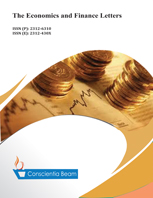Do FDI and foreign remittance inflows affect the unemployment rate? A new insight
DOI:
https://doi.org/10.18488/29.v11i2.3712Abstract
This study aims to investigate the impact of FDI and foreign remittances on unemployment from 1991 to 2020 from Bangladesh's perspective. With the use of EViews 10 version, this study used the ARDL technique to capture the long-run and short-run estimations. The study utilized the unemployment rate as a dependent variable and foreign direct investment (FDI) and foreign remittances as independent factors. The remaining factors include exchange rate, GDP growth, exports, and inflation rate; these are controllable variables. The results of the research show that FDI and foreign remittance have a positive and statistically significant association with unemployment rate in Bangladesh, both in the long run and in the short term. Thus, according to the findings, FDI and foreign remittances are creating more unemployment in Bangladesh. Unlike the general economic theory, which states that the bidirectional relationship of FDI with the unemployment rate, as well as foreign remittances with the unemployment rate, is inverse, these research outcomes basically suggest that FDI and foreign remittance inflows are displacing domestic labor with, perhaps, a low-cost, highly skilled overseas workforce, and also indicate that there might be an increasing trend in the brown-field investment sector. For policy implications, this investigation lends support to the theory that Bangladesh should focus more and more on skilled development policies for domestic workers and create a sound environment for foreign investors in order to reduce the country's unemployment rate.

